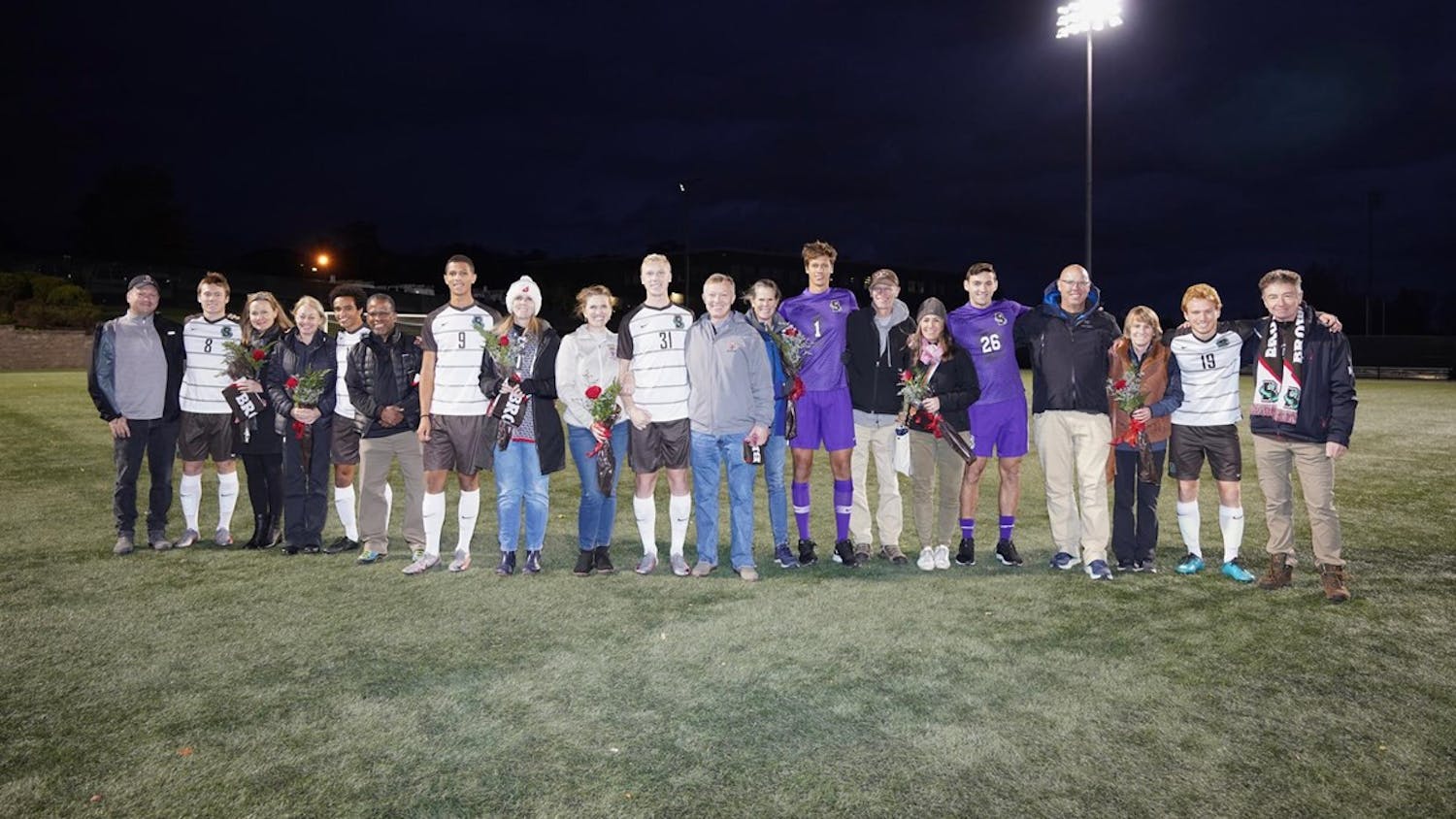As the University’s relationship with online education inches forward, three alumni are jumping on the movement to shift higher education from building bricks to online clicks.
Launched by two Stanford professors in April 2012, online education system Coursera’s self-described vision is of “a future where the top universities are educating not only thousands of students, but millions.” More than 30 universities around the world, including Brown, are now participating in the online education movement through Coursera.
Cruising to Coursera
Jerry Charumilind ’00, Anne Trumbore ’89 and Norian Caporale-Berkowitz ’12 didn’t know each other until Charumilind and Caporale-Berkowitz arrived last fall at Coursera, based in Mountain View, Calif.
Before being hired, Charumilind took two classes via Coursera, one of which was taught by company co-founder Andrew Ng.
“From his video lectures I had a very good sense of his character,” Charumilind said. Upon hearing about the company starting up, he applied for a position.
The opportunity to work at Coursera was “really exciting and motivating” compared to his previous job working for TiVo, he said.
Charumilind currently works as an engineer to make Coursera’s tools, such as video lectures, quizzes and computer assessments, more accessible to instructors.
When she applied for a job with Coursera, Trumbore had been working in the online education field for almost a decade, beginning with Stanford’s online high school program through the Education Program for Gifted Youth. Like Charumilind, she reached out to Coursera looking for a position on the team after hearing about the company. Trumbore, who works in course operations, oversees relations with universities, writes a partner newsletter and manages communications for the company. Flexibility is a key characteristic of the organization, whose team members are all well-rounded and do “a little bit of everything,” she said.
Trumbore, who concentrated in semiotics at Brown, said she picked up skills at Coursera that she would not have learned otherwise, such as working with computer code.
Caporale-Berkowitz started his work with online education as a part of CourseWire, a series of short science video tutorials started at Brown. He also works in course operations at Coursera to ensure they function efficiently. A self-described “middleman between professors and engineers,” Caporale-Berkowitz works with professors to help them master the technology and builds the tools professors need.
Caporale-Berkowitz expressed an ardent belief in Coursera’s mission.
“I’m right at the cutting edge of what’s happening in online education,” he said.
A custom education
Though a majority of Brown students has embraced the adoption of Coursera, a minority has expressed concerns about the effectiveness of online education and how teaching online courses might influence professors’ priorities, The Herald previously reported. But the Brown alums working at Coursera stand firmly behind online education.
“It’s not going away. The question is, ‘How do we make it better?’” Trumbore said.
Trumbore and Charumilind agreed that online education is not meant to replace the experience of being at a university.
“So much of your university experience is the environment,” Charumilind said. He noted that the experience of attending a school like Brown is not available for many people. “The clearest benefit (of online education) is the amount of access that people have,” he said.
Because Coursera does not charge tuition, it “serves everybody with an Internet connection,” Trumbore said.
A key feature is the “customizability” of Coursera. The online courses allow for students to take classes outside of their intended majors, a convenience not found at most universities, Trumbore said.
Coursera also offers the opportunity to interact more closely with instructors. Most students do not have the benefit of working closely with a professor who is a “leader in their field,” Trumbore said. Large lecture halls are common, especially in many underfunded public institutions where getting spaces in classes and graduating in four years can be difficult, she added.
With Coursera, professors can “flip” their classrooms by assigning a recorded lecture as homework, allowing the instructors to concentrate on problem areas during class, Caporale-Berkowitz said. “It’s raising the level of education for everyone,” he added.
“The student has to bring a lot more agency to an online class in order to succeed and do well,” Trumbore said. “I think that this represents a fundamental shift in how people are going to start viewing their own education.”
‘Paying it forward’
Charumilind said he was very fortunate to attend Brown and to be able to give back through Coursera. All three alums expressed an appreciation for the access to top-tier education Coursera provides virtually anyone interested in pursuing it, adding that their Brown experiences inspired this shared sentiment.
“People are very, very driven by the mission of extending access to high-quality education,” Charumilind said. “That’s a very large undercurrent to all of our work.”
Trumbore and Caporale-Berkowitz said they bring the values instilled in them during their years on College Hill to their work.
“What I did at Brown had an enormous influence on which direction I think online education should go,” Caporale-Berkowitz said. Through serving as a teaching assistant for a Brown genetics course, he discovered the importance of teaching as a part of the learning process and is now working on building a teaching assistant program for Coursera.
“Teaching and learning are two sides of the same coin,” he said. “We’re trying to get students to be involved in teaching each other and giving back to the courses.”

ADVERTISEMENT




